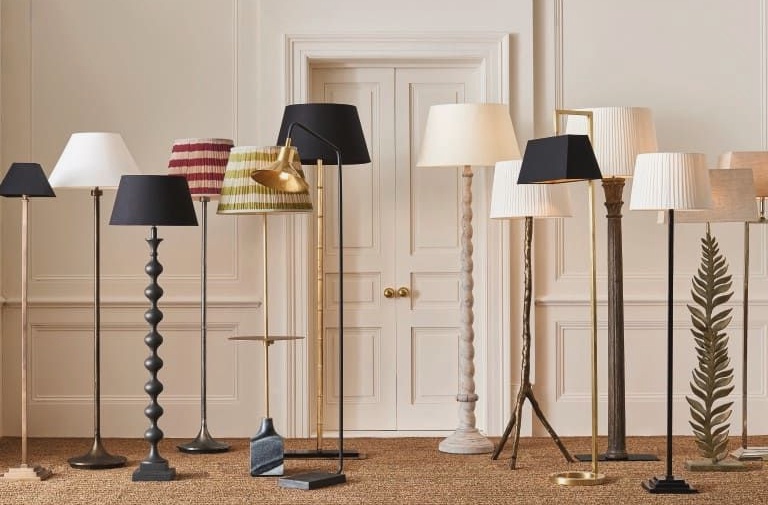In the realm of interior design, lighting plays a pivotal role in setting the tone and ambiance of a space. Among the diverse array of lighting options, the floor lamp stands out as a versatile and stylish choice. This article delves into the world of floor lamps, exploring their various types, styles, and factors to consider when selecting the perfect floor lamp for your living space.
Understanding Floor Lamps:
A floor lamp is a freestanding lighting fixture designed to provide ambient, task, or accent lighting. These lamps come in an extensive range of styles, shapes, and sizes, catering to different design preferences and functional needs. Floor lamps not only serve as functional lighting solutions but also contribute to the overall aesthetic of a room, making them essential elements in interior decor.
Types of Floor Lamps:
-
Arc Lamps: Arc floor lamps feature an arched arm that extends from the base, providing a sweeping and dramatic light source. These lamps are ideal for providing overhead lighting without the need for ceiling installation. They make a bold statement in living rooms and reading nooks.
-
Torchiere Lamps: Torchiere floor lamps have an inverted, bowl-shaped shade that directs light upwards. They are excellent for creating indirect, ambient lighting and are often used to illuminate dark corners or accentuate tall ceilings. Torchiere lamps come in various styles, from traditional to modern.
-
Tripod Lamps: Tripod floor lamps have a three-legged base, reminiscent of a camera tripod. This design adds a touch of visual interest and works well in contemporary or eclectic settings. The tripod base provides stability and a unique focal point in the room.
-
Swing Arm Lamps: Swing arm floor lamps feature an adjustable arm that can be swung from side to side. This functionality allows for precise control over the direction of light, making them ideal for reading or task lighting. They are often found in home offices, bedrooms, or living spaces.
-
Tree Lamps: Tree floor lamps have multiple arms or branches with individual light fixtures, resembling a tree's branches. Each branch can be independently adjusted, providing versatile lighting options. Tree lamps are perfect for spaces where varied lighting levels are desired.
Choosing the Right Floor Lamp:
-
Consider the Room's Purpose: The intended use of the room influences the type of floor lamp you should choose. For example, a reading nook might benefit from a swing arm lamp, while a living room could be enhanced by an arc lamp for overall illumination.
-
Height and Proportion: The height of the floor lamp should complement the room's scale and furniture. Taller lamps work well in rooms with high ceilings, while shorter lamps are suitable for spaces with lower ceilings or alongside furniture pieces.
-
Match the Decor: Floor lamps come in an array of styles, ranging from modern and minimalist to classic and ornate. Select a floor lamp that complements the existing decor of the room. A cohesive design ensures that the lamp becomes an integral part of the overall aesthetic.
-
Lighting Needs: Assess the lighting needs of the space before choosing a floor lamp. Consider whether you need ambient, task, or accent lighting. Some floor lamps come with dimmer switches or adjustable shades, providing flexibility in creating the desired lighting effect.
-
Material and Finish: The material and finish of the floor lamp contribute to its overall appearance. Whether it's a sleek metal finish, a wooden base, or a combination of materials, the choice can impact the lamp's visual appeal and how well it complements the room.
Placement and Usage Tips:
-
Create Zones: Use floor lamps to create distinct zones within a room. For example, place a floor lamp near a reading chair to create a cozy reading nook or use one to illuminate a dark corner, transforming it into a well-lit and inviting space.
-
Layered Lighting: Incorporate floor lamps as part of a layered lighting scheme. Combine them with other lighting fixtures, such as ceiling lights and table lamps, to achieve a balanced and well-lit environment.
-
Adjustable Features: Opt for floor lamps with adjustable features, such as swivel heads or adjustable arms. This allows you to direct the light precisely where it's needed, making the lamp more versatile for different activities.
-
Statement Piece: A carefully chosen floor lamp can serve as a statement piece in a room. Whether it's a unique design, an interesting shape, or a bold color, let the floor lamp add a touch of personality to your space.
Conclusion:
In the world of interior design, the floor lamp stands as a beacon of style and functionality. From arc lamps that gracefully arch over living spaces to tripod lamps that add a modern flair, the variety of floor lamps available ensures that there's a perfect match for every home. Consider the room's purpose, height, decor, and lighting needs when selecting a floor lamp, and let this versatile lighting fixture illuminate your living spaces in both form and function.


No comments yet